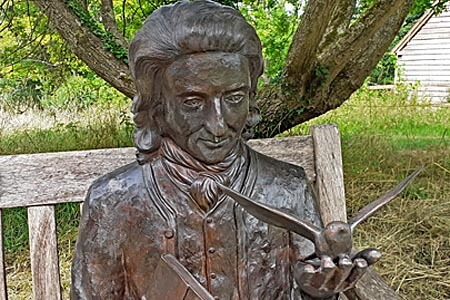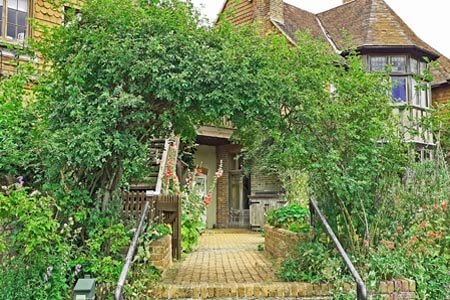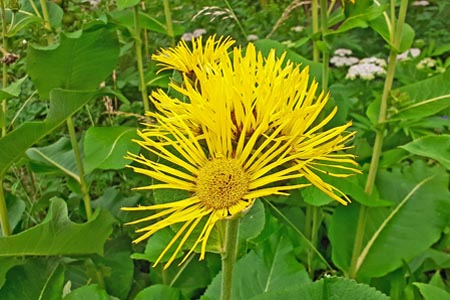Selbourne

Set in the small village of Selbourne, near Alton, in the beautiful Hampshire countryside, is the Gilbert White House and Gardens, Selbourne is approximately 25 miles from Portsmouth.
Gilbert White (1720–1793) was an English naturalist, clergyman, and author best known for his pioneering work in natural history and ecology. He is celebrated for his influential book, The Natural History and Antiquities of Selborne (1789), which is considered one of the earliest and most significant works on the observation of nature.
White was born in Selborne, Hampshire, where he spent most of his life. He was educated at Oriel College, Oxford, and after taking holy orders, served as a curate in various parishes, although he returned frequently to his family home in Selborne. His passion for natural history led him to meticulously observe and document the flora and fauna of his local surroundings.
The Natural History and Antiquities of Selborne is a collection of letters and essays documenting his observations of the natural world. It covers a wide range of topics, from the behavior of birds and insects to the seasonal changes in plants and the effects of weather on the environment. White’s approach was unique for his time because he focused on the behavior and ecology of animals rather than simply describing their physical characteristics. His detailed and systematic observations, combined with his engaging prose, set a new standard for nature writing.
White's work has had a lasting impact on both natural history and literature. He is often credited with laying the groundwork for modern field studies in ecology and animal behavior. His careful observations and descriptions of the natural world have inspired generations of naturalists and writers, making him a foundational figure in the history of natural history and environmental literature.
The house is also home to the Oates Collection which commemorates the life and adventures of Captain Lawrence Oates (1880 - 1912). Captain Oates was famously a member of the Antarctic South Pole 1911-12 team, led by Captain Robert Scott. The team were beaten to the South Pole by the Norwegian team led by Amundsen. The British team were dogged by poor food supplies and atrocious weather conditions, Captain Oates sacrificed his own life in an attempt to save his fellow team members.
Gilbert White's Gardens
The gardens at Gilbert White's home in Selborne, known as The Wakes, are a historically significant and beautifully restored feature of his former residence. White, who was as passionate about gardening as he was about natural history, carefully designed and tended these gardens, incorporating both practical and ornamental elements.The gardens reflect White's interests in horticulture and his curiosity about the natural world. He used the space as a living laboratory, experimenting with different plants and cultivation techniques. Today, the gardens have been restored to their 18th-century appearance, based on his writings and sketches.
Key features of the gardens include:
The Great Terrace: A distinctive feature of the garden, this long, raised walkway was built by White to provide views of the surrounding landscape and his meticulously arranged flower borders. It offers a vantage point similar to the one White would have enjoyed, allowing visitors to appreciate the layout and beauty of the gardens and the views of Selborne and the Hanger.
The Herb Garden: Reflecting White's interest in practical gardening, this area contains a variety of herbs that would have been used for cooking and medicinal purposes in the 18th century. The planting here follows historical patterns and includes species like rosemary, sage, and thyme.
The Wildflower Meadow: Inspired by White’s love of natural habitats, this area showcases native wildflowers, attracting a variety of insects and birds. It reflects White’s observations of the natural world and his early appreciation for the importance of biodiversity.
The Kitchen Garden: This section is dedicated to the cultivation of fruits and vegetables, much as it was during White’s time. It includes traditional crops that would have been grown in the 18th century, such as apples, pears, and seasonal vegetables.
The Park and Orchard: Beyond the formal gardens, the grounds include a park and orchard area where White planted a variety of fruit trees. This space exemplifies his approach to integrating productive and ornamental gardening.
Overall, the gardens at Gilbert White’s house provide an immersive experience into the life and work of one of England’s most influential naturalists, reflecting his detailed observations, experimental spirit, and deep appreciation for the natural world. Visitors can explore the grounds and gain insight into the gardening practices and botanical interests of the 18th century, as well as White’s personal contributions to natural history.
Gilbert White's House
- The Wakes, High Street, Selborne Hampshire GU34 3JH.
- Telephone: 01420 511275
Gilbert White's House at Selbourne.

